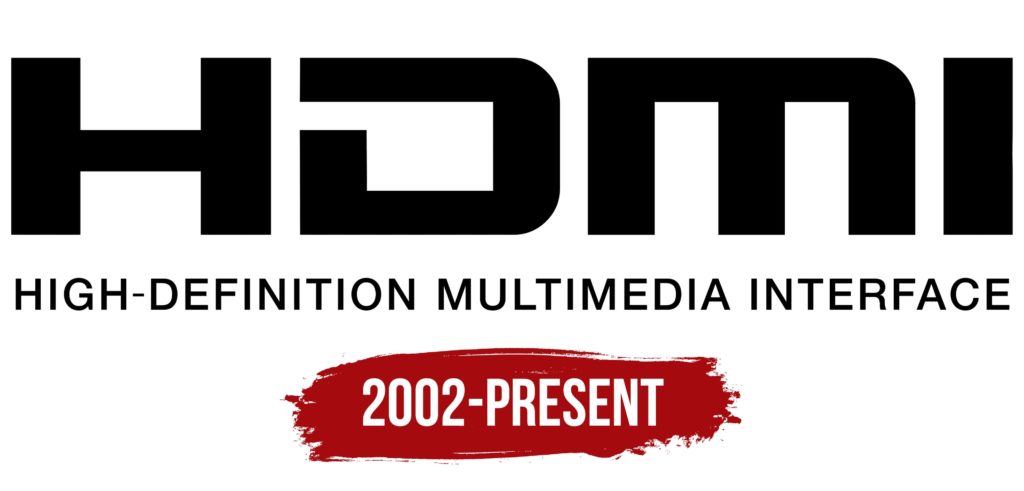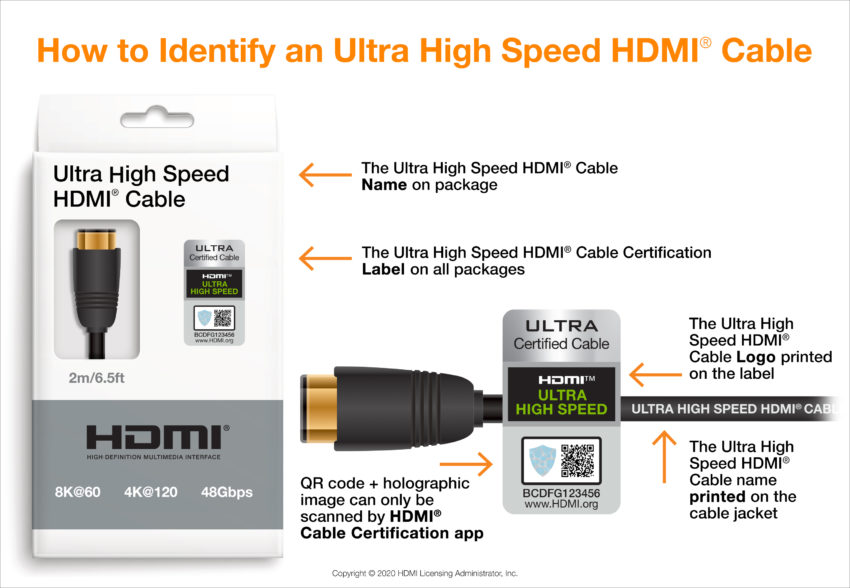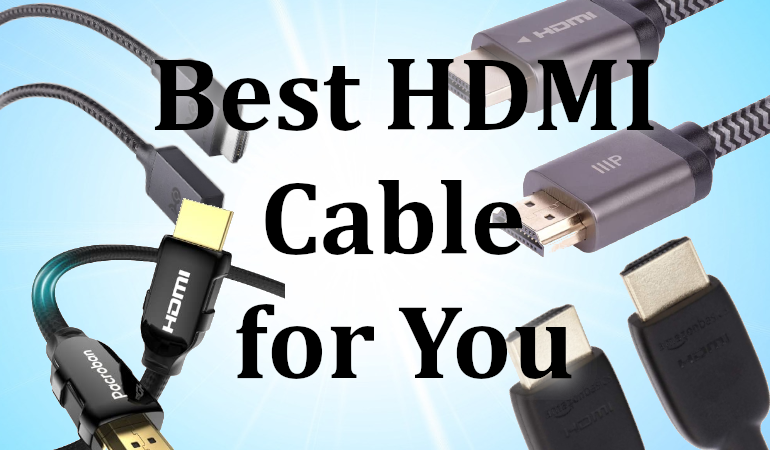Ultra High Speed HDMI Cables – The Least Expensive by Length
A couple of years ago, if you asked me if it was worth shelling out cash to change all of your HDMI cables with new Ultra High Speed versions, I would have said no. There wasn’t a good reason unless you were having HDMI dropouts or some other bandwidth-related issue. But with the increasing availability of HMDI 2.1 AV receivers and devices, it makes sense to start looking at a swap-out. Moreover, if you are getting into the hobby and buying new cables, there is no reason to buy older HDMI cables because you will swap them out and waste money in the long run.
But where do you start? Is a cable just a cable, or do you need to look at specific Ultra High Speed HDMI cables? Is the super expensive exotic HDMI cable worth the extra 500% you will pay for it? Spoiler alert – it never is! Where is the best place to look? All of these are great questions, and we will answer them, plus we will give you some advice on what we think are the best cables for your system.

What is Ultra High Speed HDMI?
We’ve already covered this in detail so I will point you to a more in-depth article on Ultra High Speed HDMI cables here. What you need to know is that Ultra High Speed HDMI cables will give you more bandwidth, and a bunch of next-gen features like:
And you get further refinements to:
- HDMI CEC (Consumer Electronics Control)
- Dynamic HDR (Dolby Vision / HDR10+ metadata)
- eARC (enhanced audio return channel)
- Dolby True HD / DTS Master Audio and other lossless formats via bitstream out
You may or may not need those features right now. But you could in the future. If you are buying an HDMI cable now, why not make sure it is as up-to-date as possible?
What To Look For?
Ultra High Speed HDMI cables all come with a certification. It will include a unique hologram and QR code that you can scan to ensure authenticity. Aside from that, there is no need to look for gold-plated connectors or cable sheaths braided from the hair of audiophiles – none of that makes any difference. If the run is long enough, you will need to look at active cables, but that applies to all HDMI cables, not just Ultra High Speed HDMI cables.

Best Ultra High Speed HDMI Cables by Length
I have broken down my list into short-run (6-10′), medium-run (15′), and long-run (20’+ cables. These are also cables that I have used or know people have used with success, and while we will be sticking to a few brands, you can rest assured they have been proven to work.
| Run | Brand | Total Price | Link |
| Budget Short Run | Amazon Basics High Speed HDMI Cable 48Gbps, 8K/60Hz – 3’/6’/10′ (Black, White, or Grey) | $6.99 – $9.99/Ea | Buy Now From Amazon |
| Premium Short Run | Monoprice 8K Certified Braided Ultra High Speed HDMI 2.1 Cable – 3’/6’/10′ (braided) | $9.99 – $14.99/Ea | Buy Now From Amazon |
| Medium Run | Monoprice 8K Certified Braided Ultra High Speed HDMI 2.1 Cable – 15′ (Braided) | $22.99/Ea | Buy Now From Amazon |
| Long Run | Cable Matters Active 8K @60Hz Fiber Optic HDMI Cable 16.4’/32.8’/49.2′ | $69.99 – $129.00/Ea | Buy Now From Amazon |
| In-Wall HDMI | Pacroban 8K HDMI 2.1 Braided Cable – 3 – 75 feet (must buy individually to get certified version) | $11.99 – $175/Ea | Buy Now From Amazon |
Why These Cables?
For each category of cable, I balanced performance and reliability against price and appearance. For most of us, we will never see the cables we use, but others may need to have a visible cable run or want a more premium feeling cable. If you don’t need or want a “premium” finish, go with the Amazon Basic cables. They are around half the price of the Monoprice and will absolutely do the trick.
Each of the cables has HDMI certification, as well as coming from reputable brands with lots of reviews. This should give you some reassurance when you order. Plus, I chose to use Amazon for its rock-solid and easy return policies. If you need in-wall rated, I have an option for you. That brand sells cables in packages of 1, 2, 3, or 100. Unfortunately, some buyers have reported that any package with more than one cable will come with non-certified cables. You must buy them individually to get the certified version. This is more expensive, but worth it in my opinion.
Obviously, active cables are much more expensive than their shorter, and non-active counterparts. That said, if you need a long-run cable, active cables are the only way to go. There are no passive cables that can reliably pass the full bandwidth past 15 feet. I’d make the argument that 15 feet is stretching it. If it were me, I’d buy active for anything beyond 12 feet.
As always, before you install anything, plug in your gear and make sure it works. You’ll know right away if it doesn’t.
What Missing?
You will notice that I made no mention of “features” like gold-plated connections. Manufacturers will often try to tempt buyers with these things thinking they will get a better cable. That’s just not the case. With HDMI cables, you need an HDMI certification, and that’s it. Build quality is important for longevity, but, in most cases, if it works out of the box, it will continue working. If you see that certification, you know that your Ultra High Speed HDMI cable will work as advertised. Anything else is not important to the function of the cable and just adds (unnecessarily) to the price.
Our Take
Buying a new cable, or a series of them, should not take much thought or effort on your part. While build quality should play a part in your decision, you can rest assured that the HDMI cables we have suggested will meet your needs in terms of budget and quality, plus they all come with certification.
That said, if you don’t go with our recommendations, make sure you read the listing carefully. Many times you will see terms like “8K” or High Speed”. I started to see “8K HDMI” on Amazon over two years ago, despite the fact that HDMI 2.1 wasn’t even released. Do your homework and make sure that the cable you get will actually do what you need it to do.


